It had been a few years since I grew wheat so I sowed the ‘Pima Club’ variety with optimism last week. Then a flock of white-crowned sparrows arrived. I walked up to the bed as they fluttered off, and I found a fuzzy mess. It looked like they had scratched up and eaten every seed.
There is no excuse for this. A bed of carrot seeds I’d sown a week before was ten feet away, covered with plastic poultry netting to protect them from such birds. It’s my routine to cover my sowings with something. I’d simply forgotten to finish my wheat-sowing job with a form of bird protection.

Forms of bird protection
I lay either plastic poultry netting or tulle fabric over a garden area where I’ve sown vegetable seeds. I do this when I sow small seeds, anyway, such as lettuce, carrots, or wheat. I don’t bother when I sow large seeds like peas or corn because they’re sown deeper and I’ve never seen birds scratch and discover them. I hold the netting or tulle down with rocks or bricks or drip irrigation stakes.
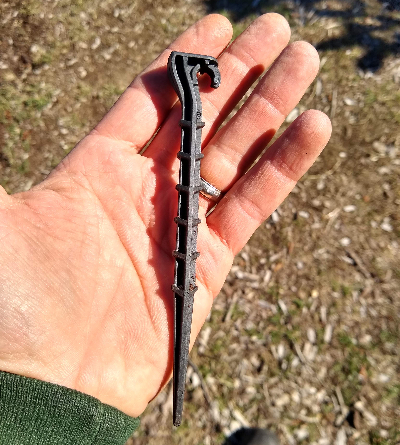
Once the seeds germinate, they grow through the openings in poultry netting but most can’t poke through tulle. Carrots are the exception, as they have such narrow cotyledons (first leaves).
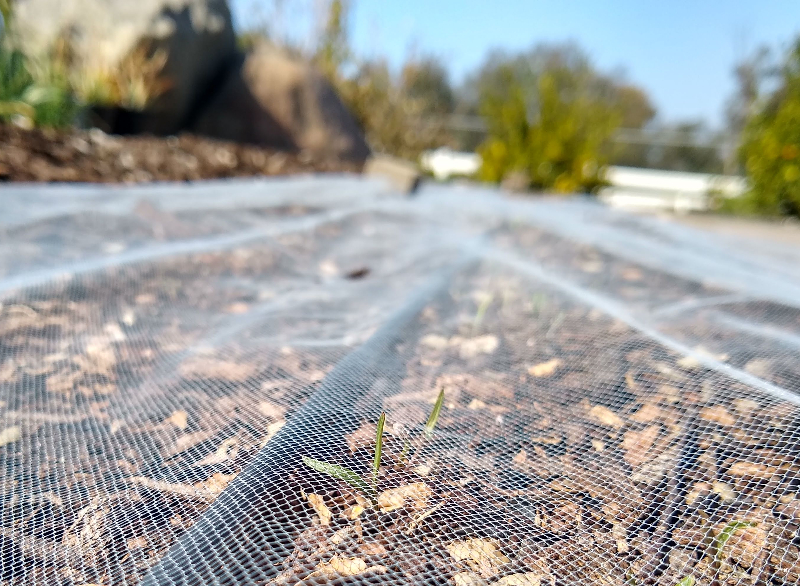
Removing the cover
I sometimes remove the cover after all the seeds are up and growing, but if I’ve noticed that there are many birds around I often leave it on until the seedlings are bigger. Certain birds love to nip at newly emerged seedlings; I’ve seen California towhees doing this most in my yard.
With tulle, nearly 100% light comes through the fabric so it can remain over the plants indefinitely. And it’s lightweight, so the plants just push it up as they grow.
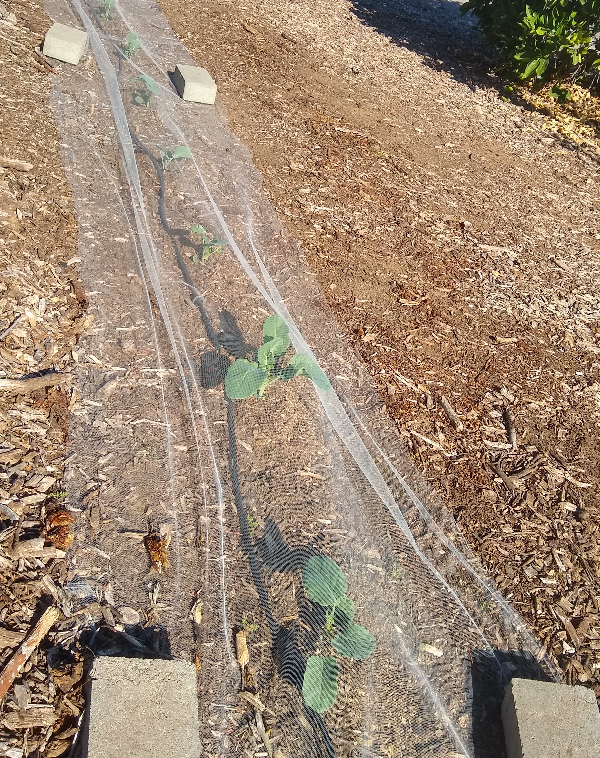
With plastic poultry netting, you have to push in the sides so the center rises and forms a low tunnel over the seedlings. Use stakes, rocks, or bricks to keep the netting in place.
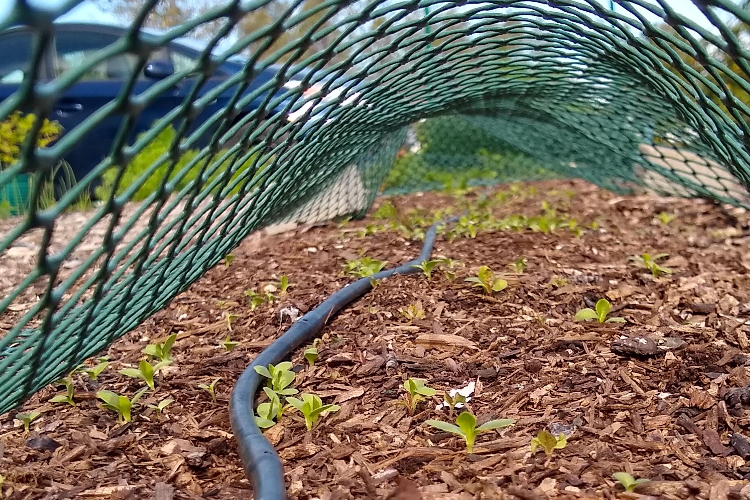
Other materials and other uses
I buy tulle from Paper Mart. I buy plastic poultry netting from hardware or home improvement stores. Other materials can be used to protect sowings from birds, however. One is a row cover such as Agribon AG-15. Another is a shade cloth. I would use a light shade cloth, such as 30 percent, so you can easily see when the seeds have germinated. Seedlings need full sun once they’re up and growing, except certain crops like lettuce and brassicas started in late summer.
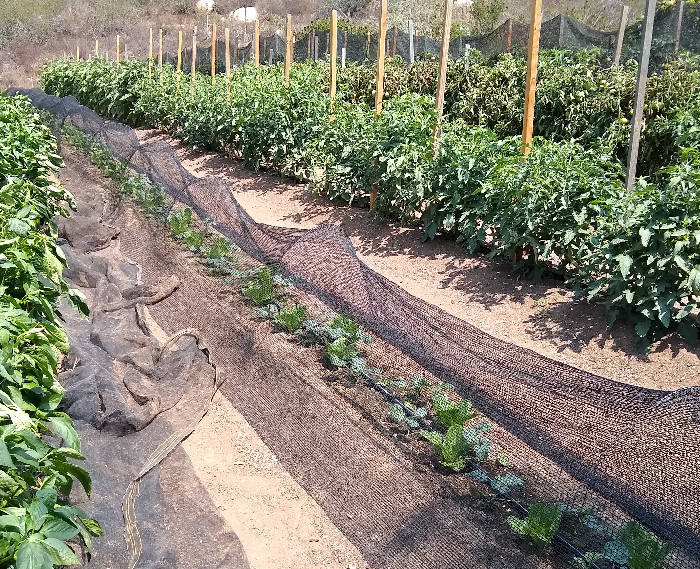
All of these covers — tulle, plastic poultry netting, row cover, and shade cloth — can additionally protect your seed beds from being exploited by other critters. They will keep rabbits off the plants. They will discourage raccoons and skunks from digging in search of grubs. They will also discourage your cat from using the bed as a litter box.
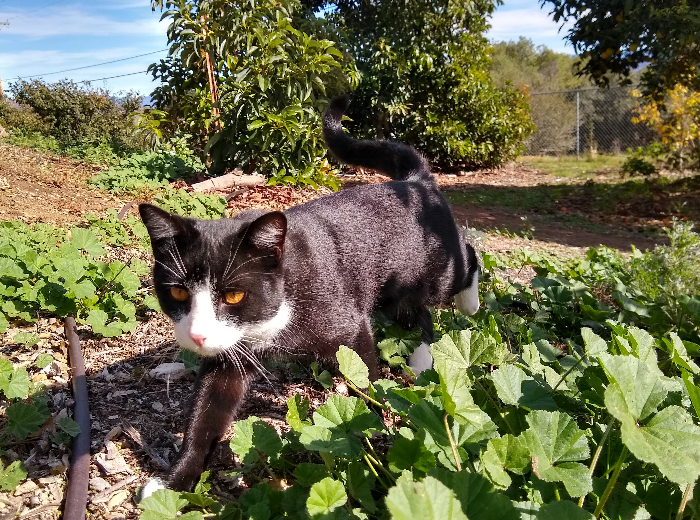
All of my Yard Posts are listed HERE
Please consider supporting my work here at The Yard Posts so I can keep them coming without any ads or other interruptions. Thanks!




Birds seem to know when man sows seeds. Crows especially. I learned how smart crows are while waiting near a field with a shotgun. No crows showed up. A hill man who knew crows did what I couldn’t do. Bagged a crow and we hung it up in the middle of the field. The hay crop came in. Crows are smart.
Can you do a post on how to keep ground squirrels from climbing my fruit trees and stealing the fruit?
Wrapping metal (galvanized metal wrapping) around the trunk did wonders to keep raccoons off of the pear trees in my neighbors yard.
Greg,
Similar to Ms Korol, above; except my question is specific to ground squirrels eating/destroying my avocados!!! This is so frustrating. At the rate they are removing the nearly mature fruit I will be at a total crop lose for this year.
Don, we bait gopher traps (box type) and catch ground squirrels in them. It helps. We bait them w dropped fruit.